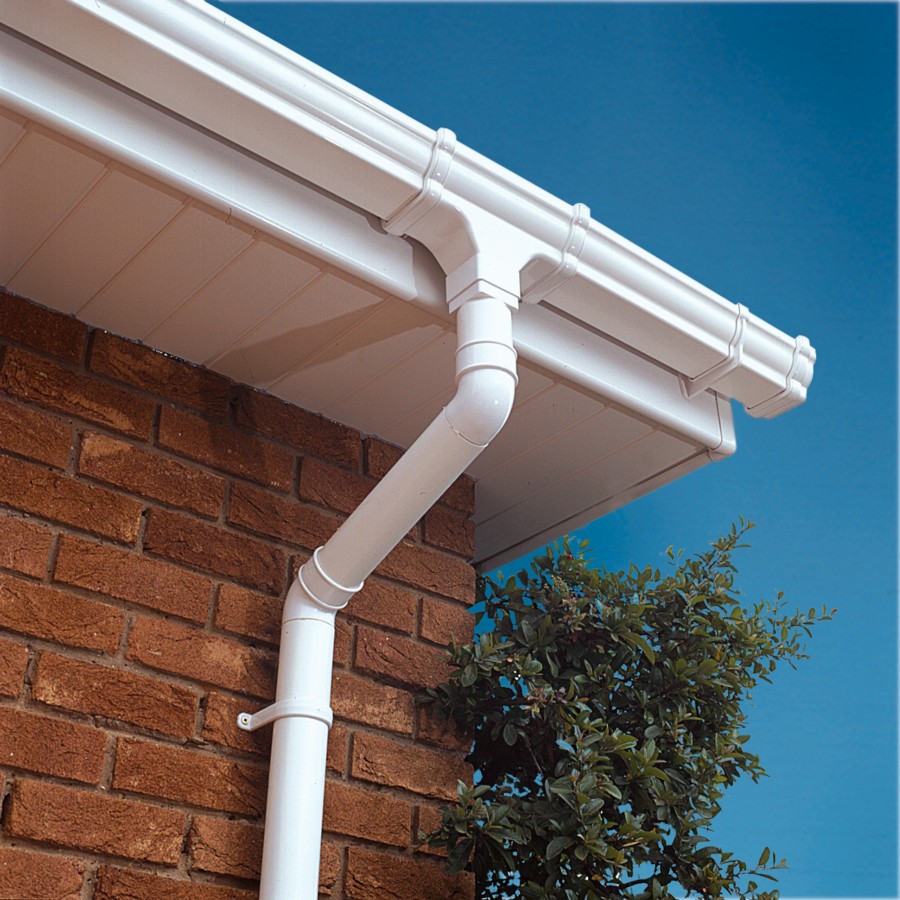Drainage
Contents |
[edit] Introduction
Drainage is the artificial removal of water, both surface and sub-surface. Drainage is often a major element of civil engineering and construction projects and is necessary to avoid flooding and other damage.
Typically, effluent is conveyed by drains to sewers, and from sewers to a suitable outfall or treatment plant. In building drainage terms, effluent can refer to the following:
[edit] Subsoil water
This is water collected from the earth to lower the subsoil’s water table.
[edit] Surface water
This is collected from surfaces such as roofs and paved areas.
[edit] Foul and soil water
This is effluent contaminated by domestic or trade waste. Foul (or waste) water relates to effluent from sinks and basins which does not contain excreta. Soil water relates to effluent from water closets, toilets and urinals which does.
Subsoil and surface water are considered to be clean and can be discharged into an approved watercourse (e.g. river or lake), or soakaway without treatment. Permission is required from the relevant authority or owner before discharging. Foul and soil water must be conveyed by sewer to a treatment plant before being discharged into a watercourse.
[edit] Subsoil drainage
Subsoil drainage can be used to improve ground stability, to lower the moisture content of a site, to enhance horticultural properties for landscaping and so on. It can be required to drain the whole site or to protect a particular part.
According to the Approved Document C of the Building Regulations, subsoil drainage should be provided to avoid the passage of ground moisture into a building’s interior or to prevent damage being caused to the building’s fabric.
Subsoil drainage is generally involves the use of pipes that are porous to allow subsoil water to pass through the pipe body, or pipes that are perforated with a series of holes in the lower half to allow subsoil water to rise into the pipe. Both types are generally laid dry jointed in a trench filled with rubble. A pervious membrane is generally placed on top of the rubble as a filter mat, then covered with normal backfill and topped with 150 mm of topsoil.
This type of groundwater control is only feasible up to a depth of 1.5 m, and any further lowering of the water table should be achieved by other methods. For more information, see Groundwater control in urban areas.
When drainage is used to protect a building’s substructure, a cut off drain is generally installed that intercepts the flow of water and diverts it away from the site.
[edit] Surface water drainage
[edit] Roofing
It is a requirement of Building Regulation’s Approved Document H that adequate provision is made for rainwater to be carried from the roof of buildings. To achieve this, roofs must be designed with a suitable fall towards either a surface water collection channel or gutter that conveys surface water to vertical rainwater pipes, which in turn connect the discharge to the drainage system.
The type of roof covering used determines the required fall of the roof. Minimum recommended falls are typically:
Standards 'flat' roofs should have a designed minimum fall of 1:40, so that an actual finished fall of 1:80 is achieved, allowing some room for error in the construction.
[edit] Rainwater installation
Drainage from roofs is generally provided by internal rainwater outlets and downpipes, or by external guttering systems or hoppers. It is recommended that there are at least two drainage points, even if the roof is small, to mitigate against one of them becoming blocked.
Drainage must be arranged so as to avoid causing dampness or damage to the building. If the rainwater pipe is fitted internally it must have leak proof joints. If external, the roofing should prevent water being blown into the eaves by extending into and below the top of the gutter.
The discharge from a building downpipe can be:
- Directly connected to a drain discharging into a soakaway.
- Directly connected to a drain discharging into a surface water sewer.
- Indirectly connected to a drain via a trapped gully if the drain discharges into a combined sewer.
Traditionally, domestic eaves gutters and rainwater pipes were made using cast iron, although uPVC systems are increasingly common due to ease of installation and low maintenance requirements. As long as adequate size, strength and durability can be assured, they can also be made of aluminium alloy, galvanised steel, stainless steel and so on.
[edit] Paved areas
Paved areas are generally provided with one of two forms of surface water drainage.
[edit] Yard gully collection
A paved area near a building is laid to falls of 1:60 towards a gully. The type of area being drained and the shape of the paved area will determine the size and number of gullies. The maximum paved area per gully should be 400 sq. m. If it is connected to a combined sewer, the yard gully should be trapped with a minimum 50 mm water seal.
[edit] Channel connection
The paving, laid to the same falls, drains away from a building to a channel laid to falls of 1:120. The channel is connected to the drainage system. The channel is typically:
- Half-round glazed clayware channel: Either open or with a grating cover.
- Precast concrete channel blocks: With a continuous slot down the centre of the top.
- Precast or in situ concrete box channel: With a cast iron square mesh grating.
[edit] Highway drainage
The construction of roads affects the natural surface and subsurface drainage pattern of watersheds or hill-slopes. The provision of adequate drainage is important to prevent the accumulation of excess water or moisture on or within road constructions that can adversely affect their material properties, compromise overall stability and affect driver safety. Drainage must cope with water from the carriageways, hard shoulders, foot/cycle paths, verges, and adjacent catchment areas.
For more information, see Highway drainage.
[edit] Sustainable urban drainage systems
Sustainable urban drainage systems (SUDS) can provide an alternative to, or addition to, traditional drainage systems. They mimic 'natural' drainage by adopting techniques to deal with surface water runoff locally, through collection, storage, and cleaning before allowing it to be released slowly back into the environment.
For more information, see Sustainable urban drainage systems.
[edit] Related articles on Designing Buildings
- Air admittance valve.
- All eyes up to plastic rainwater systems.
- Approved Document H.
- BSRIA launches Offsite Construction for Building Services topic guide.
- Cesspool.
- Difference between drains and sewers.
- Drainage and sewerage management plans DSMPs.
- Drainage stack.
- Drains.
- Fabricated drainage stacks.
- Gravity drainage.
- Grease management.
- Groundwater control in urban areas.
- Gully.
- Highway drainage.
- Invert.
- Maintenance of drainage systems to prevent flooding and water pollution.
- Pipelines.
- Pipework.
- Private sewer.
- Public sewer.
- Pumped drainage.
- Pumps and dewatering equipment.
- Rain gutter.
- Rainwater.
- Rainwater goods.
- Rainwater downpipe.
- Rainwater harvesting.
- Rainwater head.
- Safe working in drains and sewers.
- Secondary ventilation stacks in tall buildings.
- Septic tank.
- Sewer construction.
- Sewerage.
- Sewerage company.
- Soakaway.
- Soil vent pipe.
- SuDS - is there light at the end of the tunnel?
- Sustainable urban drainage systems SUDS.
- Waste water.
- Water engineering.
- Water transfers and interconnections.
[edit] External resources
- ‘Building Construction Handbook’ (6th ed.), CHUDLEY, R., GREENO, R., Butterworth-Heinemann (2006)
Featured articles and news
Construction Skills Mission Board launch sector drive
Newly formed government and industry collaboration set strategy for recruiting an additional 100,000 construction workers a year.
New Architects Code comes into effect in September 2025
ARB Architects Code of Conduct and Practice available with ongoing consultation regarding guidance.
Welsh Skills Body (Medr) launches ambitious plan
The new skills body brings together funding and regulation of tertiary education and research for the devolved nation.
Paul Gandy FCIOB announced as next CIOB President
Former Tilbury Douglas CEO takes helm.
UK Infrastructure: A 10 Year Strategy. In brief with reactions
With the National Infrastructure and Service Transformation Authority (NISTA).
Ebenezer Howard: inventor of the garden city. Book review.
The Grenfell Tower fire, eight years on
A time to pause and reflect as Dubai tower block fire reported just before anniversary.
Airtightness Topic Guide BSRIA TG 27/2025
Explaining the basics of airtightness, what it is, why it's important, when it's required and how it's carried out.
Construction contract awards hit lowest point of 2025
Plummeting for second consecutive month, intensifying concerns for housing and infrastructure goals.
Understanding Mental Health in the Built Environment 2025
Examining the state of mental health in construction, shedding light on levels of stress, anxiety and depression.
The benefits of engaging with insulation manufacturers
When considering ground floor constructions.
Lighting Industry endorses Blueprint for Electrification
The Lighting Industry Association fully supports the ECA Blueprint as a timely, urgent call to action.
BSRIA Sentinel Clerk of Works Training Case Study
Strengthening expertise to enhance service delivery with integrated cutting-edge industry knowledge.
Impact report from the Supply Chain Sustainability School
Free sustainability skills, training and support delivered to thousands of UK companies to help cut carbon.
The Building Safety Forum at the Installershow 2025
With speakers confirmed for 24 June as part of Building Safety Week.
The UK’s largest air pollution campaign.
Future Homes Standard, now includes solar, but what else?
Will the new standard, due to in the Autumn, go far enough in terms of performance ?
BSRIA Briefing: Cleaner Air, Better tomorrow
A look back at issues relating to inside and outside air quality, discussed during the BSRIA briefing in 2023.
Restoring Abbotsford's hothouse
Bringing the writer Walter Scott's garden to life.
Reflections on the spending review with CIAT.


























